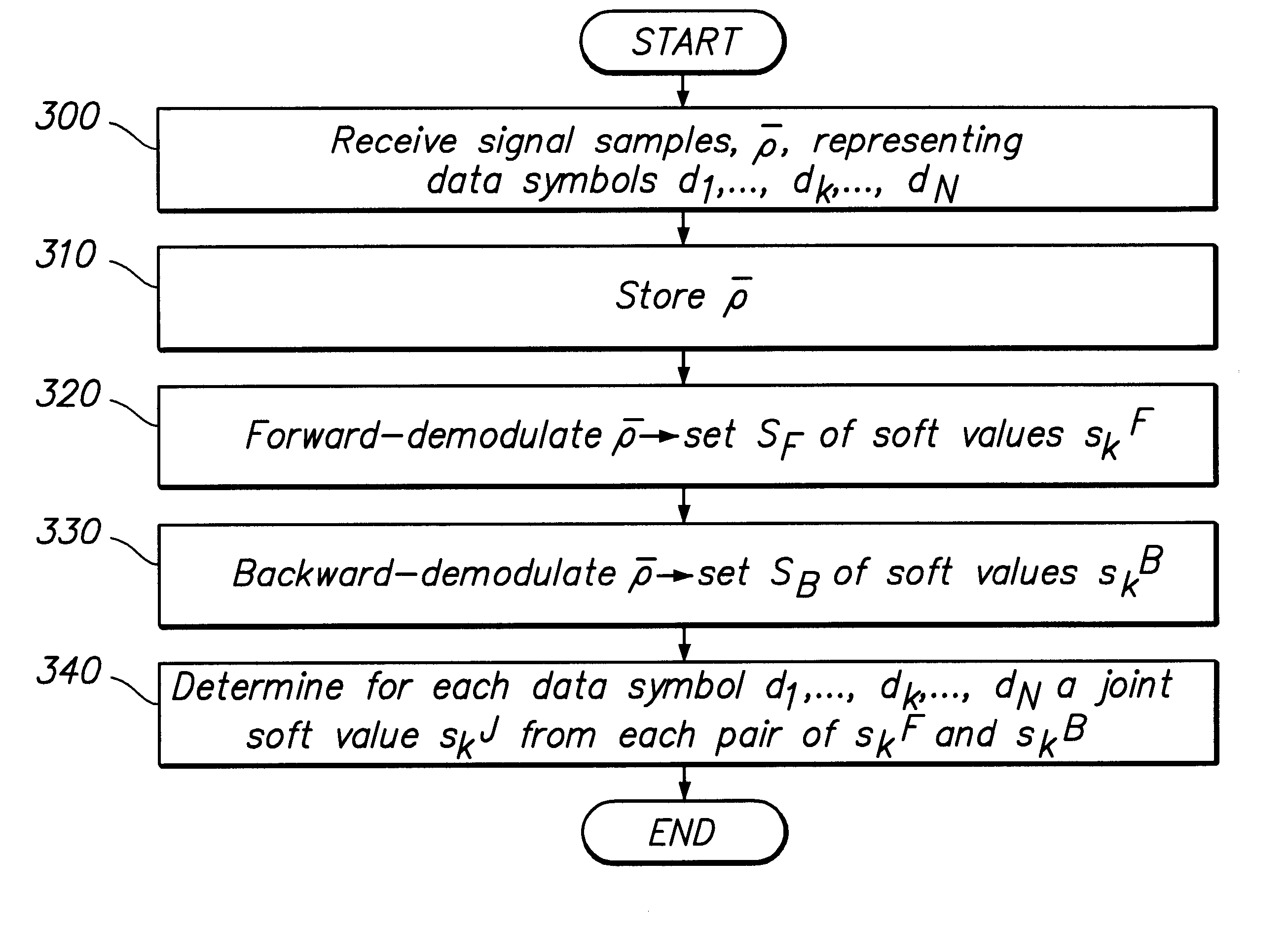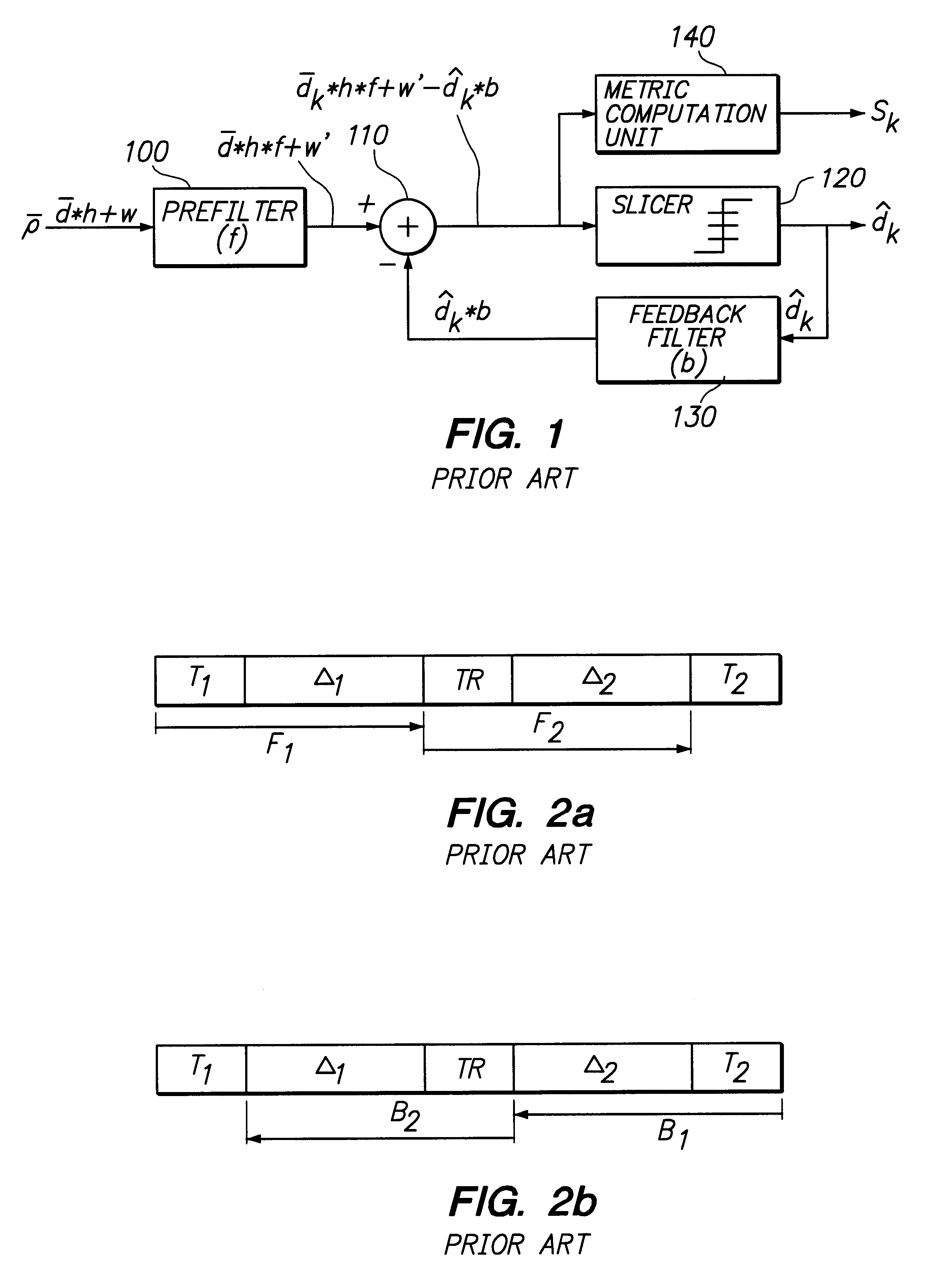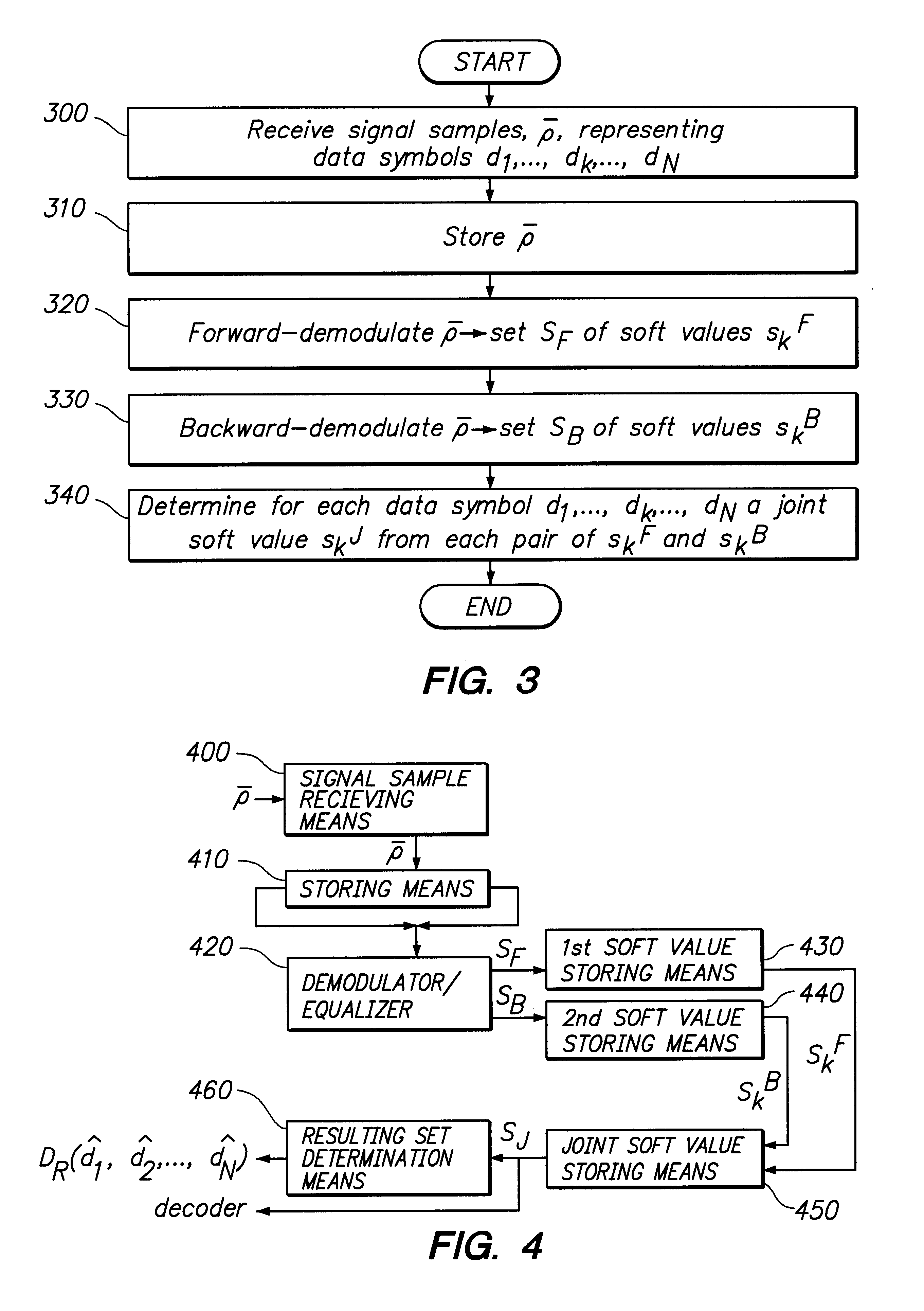Method and arrangement for demodulating data symbols
a data symbol and data arrangement technology, applied in the field of method and arrangement for demodulating data symbols, can solve the problems of neither teaching nor suggesting an actual combination, and none of the documents suggests a combination of the information derived
- Summary
- Abstract
- Description
- Claims
- Application Information
AI Technical Summary
Benefits of technology
Problems solved by technology
Method used
Image
Examples
Embodiment Construction
In FIG. 3 is depicted a flow diagram over the method according to the invention. Signal samples p, representing data symbols d.sub.1, . . . , d.sub.k, . . . , d.sub.N, which have been received over a particular communication channel are collected in a first step 300 and stored in a second step 310. Typically but not necessary, the number of signal samples .rho. is a multiple of the number of data symbols N, i.e. the number of elements in the vector .rho. equals x.multidot.N, where x is a positive integer. The number of signal samples .rho. is in any case at least greater than or equal to the number of data symbols N. In a subsequent step 320, the signal samples .rho. are demodulated in the forward direction, through a demodulator / equaliser. As a result is obtained, a first set S.sub.F of soft values s.sub.k.sup.F, which each is associated with a particular data symbol d.sub.k. The soft value s.sub.k.sup.F is a vector, whose elements are probability functions, that for each data symb...
PUM
 Login to View More
Login to View More Abstract
Description
Claims
Application Information
 Login to View More
Login to View More - R&D
- Intellectual Property
- Life Sciences
- Materials
- Tech Scout
- Unparalleled Data Quality
- Higher Quality Content
- 60% Fewer Hallucinations
Browse by: Latest US Patents, China's latest patents, Technical Efficacy Thesaurus, Application Domain, Technology Topic, Popular Technical Reports.
© 2025 PatSnap. All rights reserved.Legal|Privacy policy|Modern Slavery Act Transparency Statement|Sitemap|About US| Contact US: help@patsnap.com



